No matter where you go on Earth, you can’t get away from bugs. There are even pests in Antarctica, thanks to the human dwellings there. But ticks aren’t insects, like mosquitos—they’re arachnids. Ticks in Missouri belong to the arachnid family, just like spiders, scorpions, and mites. But, no matter what family they’re part of, the bite of a tick can have serious health consequences. If you live in Missouri, or maybe you’re just visiting, and you want to spend time in the great outdoors, you should know a little bit about the ticks in Missouri.
Here, we’ll learn about the unique tick life cycle, then go over the three species of ticks in Missouri. After that, we’ll answer a few of your biggest questions about ticks, where and when they come out, what diseases they spread, and what you can do to avoid them.
Let’s get started!
The Tick Life Cycle
All ticks start life as eggs. Females can lay thousands of eggs at once, usually in the winter or early spring. Upon hatching, the ticks are known as larvae. The larvae take their first host, generally something small, like a mouse or a lizard, before pupating into nymphs. The nymphs then feed on a second host before dropping off and maturing into adult ticks. The adults take a final host, reproduce, and die. This is the case for all three-host ticks in Missouri.
Adult ticks are fairly easy to spot—they may look like a new freckle or a seed. But, larval and nymph-aged ticks are tiny, many no bigger than a sesame seed. However, their small size doesn’t mean they can’t bite humans.
1. American Dog Tick (Dermacentor variabilis)
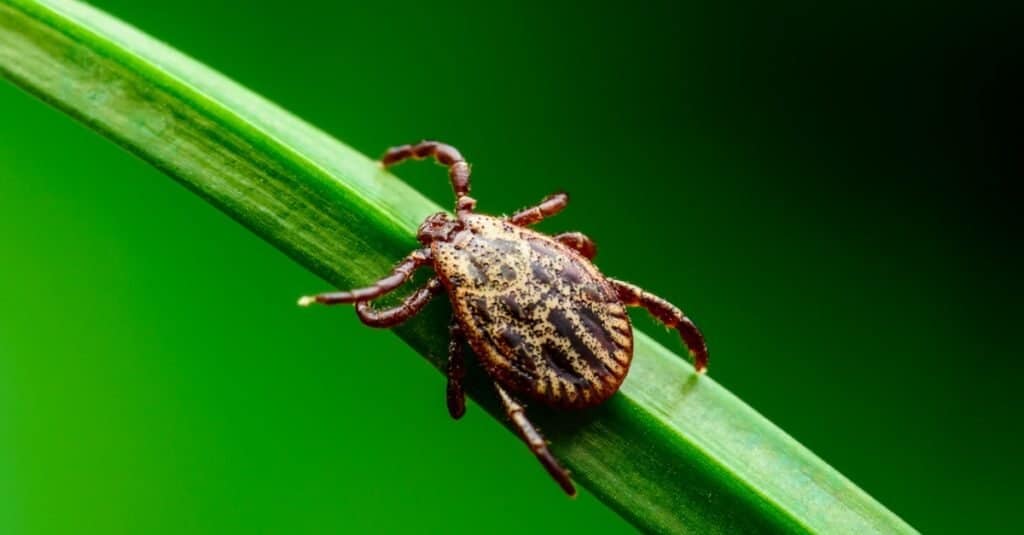
These ticks prey on more than just dogs.
©iStock.com/nechaev-kon
One of two types of dog tick in Missouri, the American dog tick has an oval body and eight legs. Males are significantly smaller than females. Most bites on humans come from the female. They’re also known as wood ticks and may feed on dogs, humans, cows, or deer. Females have dark brown bodies with tan scuta (hard shoulder shields), and males have tan backs with brown mottling. American dog ticks are the main vector for Rocky Mountain spotted fever.
2. Lone Star Tick (Amblyomma americanum)
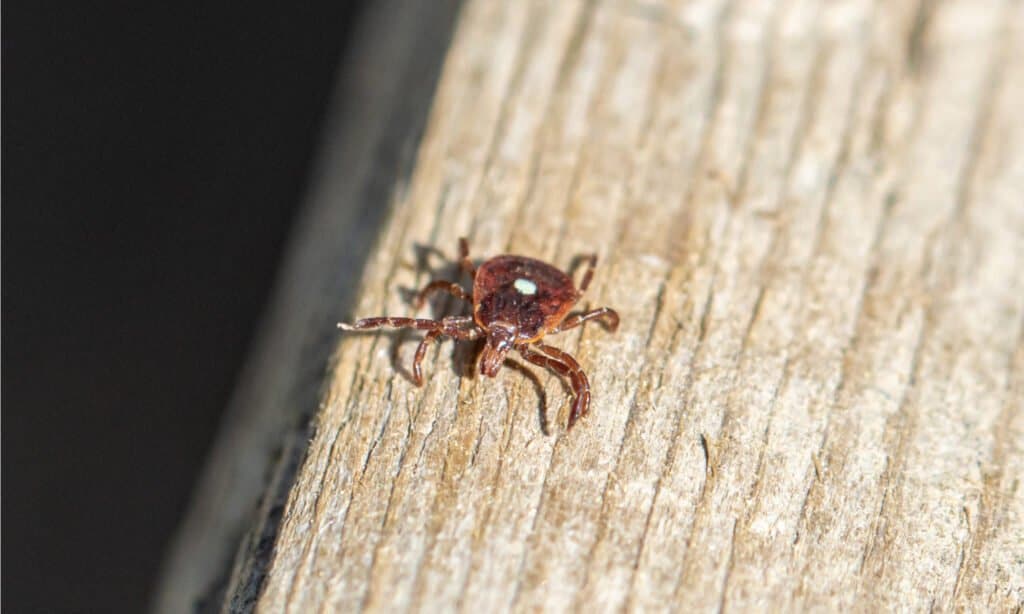
The lone star tick is one of the most common ticks in Missouri and one of the most likely to bite humans.
©Maria T Hoffman/Shutterstock.com
Lone star ticks are one of the most commonly encountered ticks in Missouri. Males and females look very similar to one another. But, females have a single white dot in the center of their back (hence their name), while males have mottled white markings. These ticks have eight legs and long, visible chelicerae (mouthparts). These long mouthparts mean that lone star tick bites tend to go deep and lead to infection more often than the bites of other ticks.
3. Deer Tick (Ixodes scapularis)
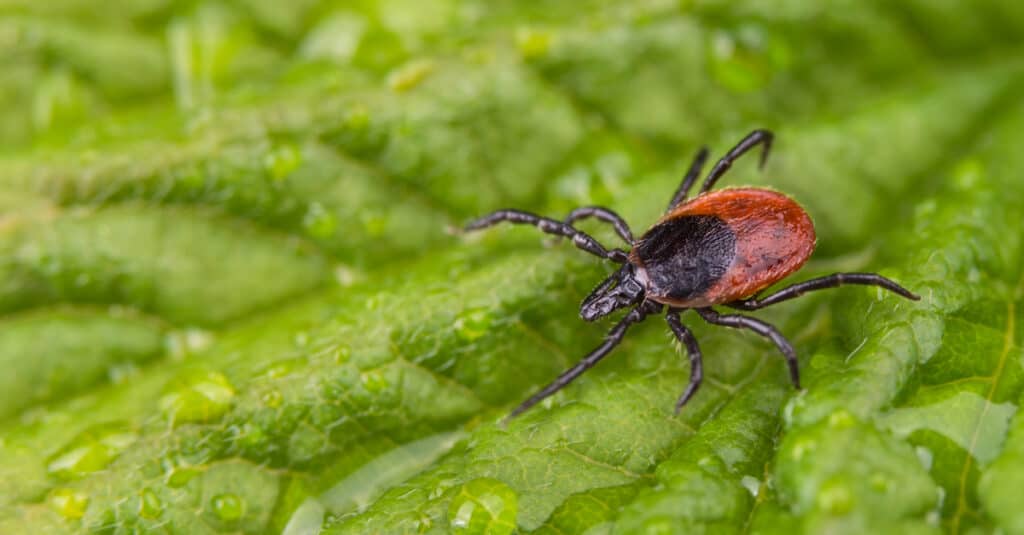
Also known as the black-legged tick, adult deer ticks feed primarily on white-tailed deer.
©KPixMining/Shutterstock.com
Deer ticks are one of the most common ticks in Missouri. They’re responsible for more bites than any other tick species, and their bite can transmit serious bacterial infections. These ticks have red-brown bodies with black legs. They’re the only type of tick in Missouri with black legs, so they should be easy to identify. Adult deer ticks prefer the blood of deer but won’t pass up the opportunity to bite a human, dog, raccoon, opossum, or any other creature.
4. Brown Dog Tick (Rhipicephalus sanguineus)
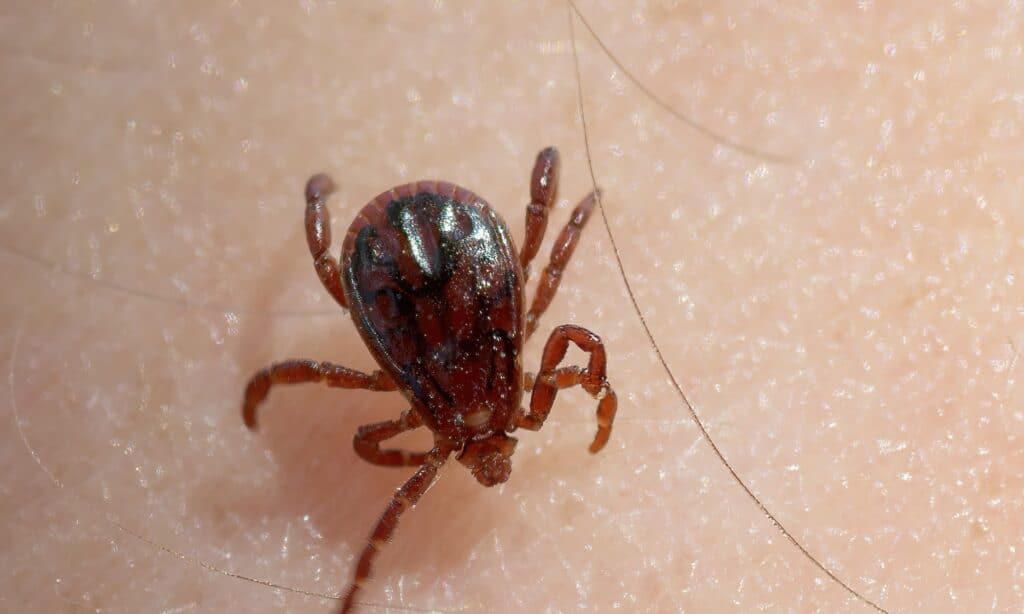
Unique among ticks, the brown dog tick lives mainly indoors.
©iStock.com/RobertAx
One type of tick in Missouri you don’t have to worry about encountering outside is the brown dog tick. As its name suggests, it feeds mainly on dogs and occasionally cats. Brown dog ticks live near dogs, and their bites can transmit several canine diseases. They’re also vectors for Rocky Mountain spotted fever. These ticks in Missouri have narrow, red-brown bodies and are much smaller than other tick species. The best way to avoid them is to give your furry pal preventive tick and flea treatment.
When is Tick Season in Missouri?
Ticks in Missouri are most common in the spring and summer months. They become less active during the hottest parts of the summer and the coldest parts of the winter.
Do Ticks in Missouri have Lyme Disease?
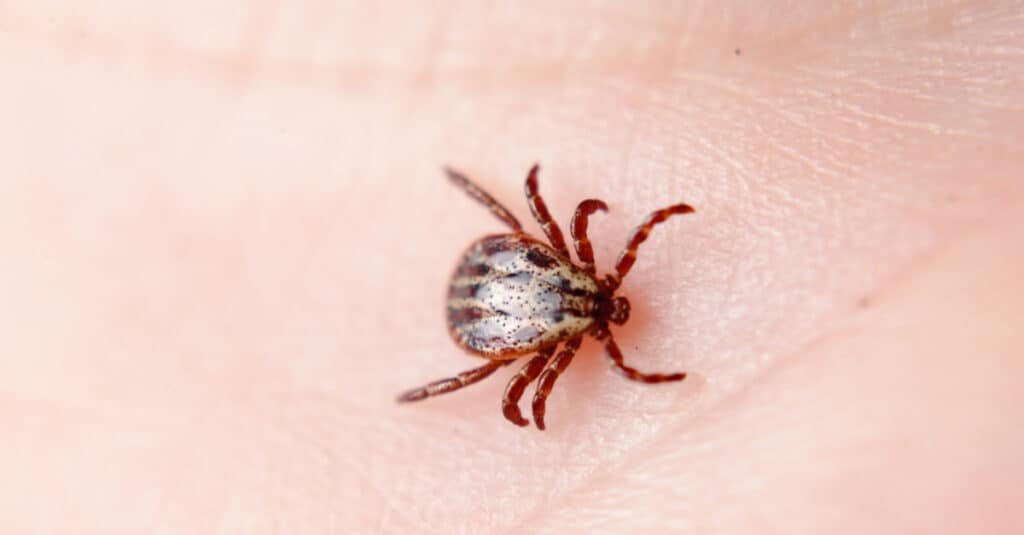
Lyme disease is the most common vector-borne illness in the United States.
©Photopen/Shutterstock.com
Of all the ticks in Missouri, only the deer tick carries Lyme disease. Lyme disease is a bacterial infection that can quickly turn chronic if left undiagnosed. So, if you sustain a bite from a deer tick, be sure to monitor yourself for any signs or symptoms of Lyme disease.
Where do Ticks Live in Missouri?
Ticks in Missouri each have a unique habitat preference. Lone star ticks live primarily in forests and shrublands with thick underbrush. American dog ticks live primarily in open grasslands and shrubs. Deer ticks prefer second-growth forests and the mixed areas between forest and grassland. Finally, the brown dog tick occurs most frequently in indoor areas close to dogs.
How to Avoid Ticks in Missouri

The only sure way to avoid ticks is by staying inside, but few people want to spend all of their time indoors.
©Kalcutta/Shutterstock.com
The first step to avoiding ticks in Missouri is to wear long pants and long-sleeved shirts. If you plan on walking off-trail, in tall grass, or among leafy forests, try not to brush up against any vegetation. Ticks generally hang out on blades of grass, the edges of bushes, or in forest floor detritus, waiting to latch onto an unsuspecting victim.
Once you’re done outdoors, check your entire body for tick bites. If you have a dog, be sure to check them too.
The photo featured at the top of this post is © iStock.com/epantha
Thank you for reading! Have some feedback for us? Contact the AZ Animals editorial team.






